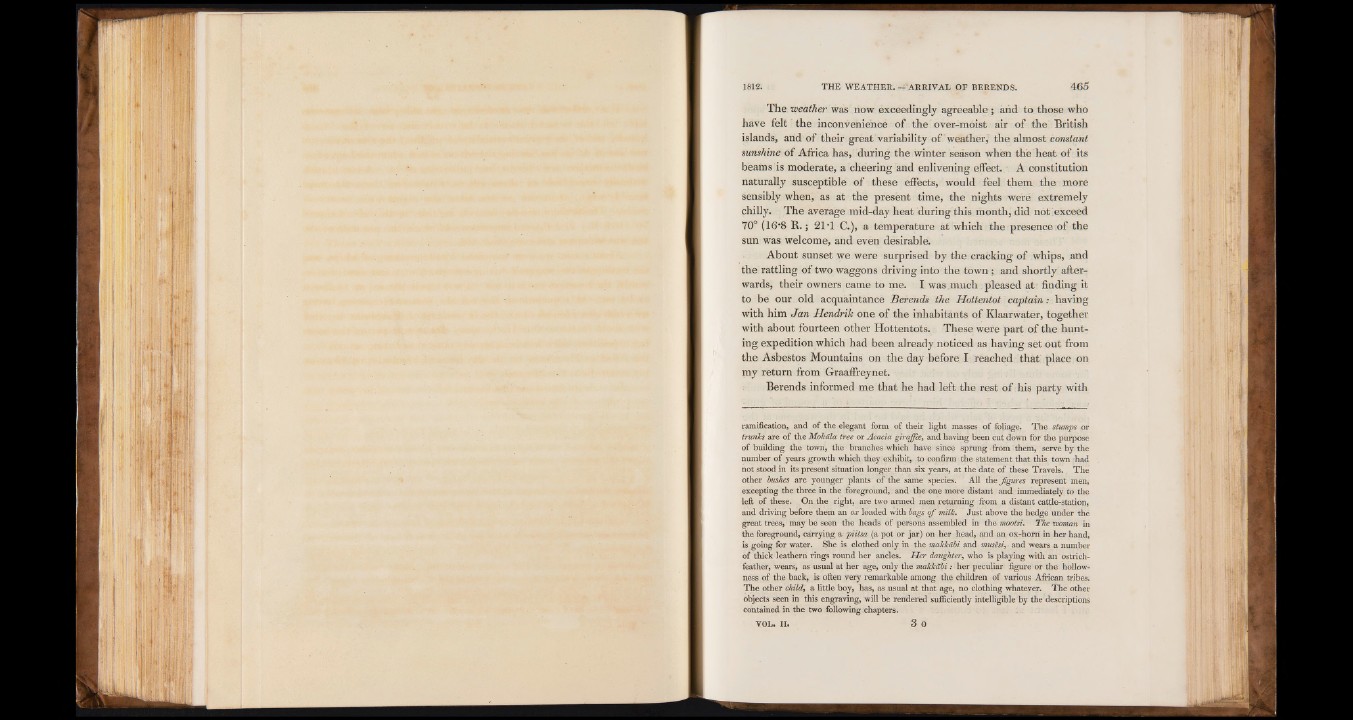
w ¡'t
The weather was now exceedingly agreeable ; and to those who
have felt the inconvenience of the over-moist air of the British
islands, and of their great variability of weather, the almost constant
sunshine of Africa has, during the winter season when the heat of its
beams is moderate, a cheering and enlivening effect. A constitution
naturally susceptible of these effects, would feel them the more
sensibly when, as at the present time, the nights were extremely
chilly. The average mid-day heat during this month, did not'exceed
70° (16*8 R .; 21T C.), a temperature at which the presence ;of the
sun was welcome, and even desirable.
About sunset we were surprised by the cracking of whips, and
the rattling of two waggons driving into the town ; and shortly afterwards,
their owners came to me. I was .much pleased at finding it
to be our old acquaintance Berends the Hottentot captain.- having
with him Jan Hendrik one of the inhabitants of Klaarwater, together
with about fourteen other Hottentots. These were part of the hunting
expedition which had been already noticed as having set out from
the Asbestos Mountains on the day before I reached that place on
my return from Graaffreynet.
Berends informed me that he had left the rest of his party with
ramification, and of the elegant form of their light masses of fotiage, The stumps or
trunks are of the Mokdla tree or Acacia giraffee, and having been cut down for the purpose
of building the town, the branches which have since sprung from them, serve by the
number of years growth which they exhibit, to confirm the statement that this town had
not stood in its present situation longer than six years, at the date of these Travels.. The
other bushes are younger plants of the same species. All the figures represent men,
excepting the three in the foreground, and the one more distant and immediately to the
left of these. On the right, are two armed men returning from a distant cattle-station,
and driving before them an ox loaded with bags o f m ilk. Just above the hedge under the
great trees, may be seen the heads of persons assembled in the mootsi. The woman in
the foreground, carrying a piitsa (a pot or jar) on her head, and an ox-horri in her hand,
is going for water. She is clothed only in the maJckabi and musesi, • and wears a number
of thick leathern rings round her ancles. H er daughter, who is playing with an ostrich-
feather, wears, as usual at her age, only the m akkabi: her peculiar figure or the hollowness
of the back, is often very remarkable among the children of various African tribes.
The other child, a little boy, has, as usual at that age, no clothing whateyer. The other
objects seen in this engraving, will be rendered sufficiently intelligible by the descriptions
contained in the two following chapters.